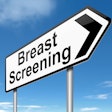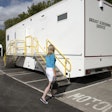Could open surgical breast biopsy experience a revival? That could be the outcome if deep Medicare cuts to payments for stereotactic breast biopsy procedures are implemented in 2014, according to women's imaging advocates.
Proposed Medicare reimbursement reductions for stereotactic breast biopsy are so severe that they could prompt many women's health providers to simply discontinue offering stereotactic biopsy services, the argument goes. That could reverse the long-term trend in which less-invasive stereotactic biopsies have largely replaced open surgeries.
The development could have political implications if the powerful women's health lobby gets wind of the changes and the cuts are allowed to go into effect at the end of January, some proponents predict.
Is breast biopsy misvalued?
The reductions come from ongoing efforts to identify "misvalued" services -- services where payment doesn't accurately reflect cost -- by the U.S. Centers for Medicare and Medicaid Services (CMS) and the American Medical Association (AMA) Relative Value Scale Update Committee (RUC), according to the American College of Radiology (ACR).
Breast intervention codes previously reported using a separate surgical and imaging guidance code are now being identified under CMS' "75% reported together" category, which results in the entire family of breast intervention codes being restructured into 14 new bundled codes.
The cuts are substantial, with an average 24% reduction to the professional component and a 17% reduction to the technical component across the code family, according to Dr. Ezequiel Silva III of the University of Texas Health Science Center. Silva is also on the board of directors of the ACR's Harvey L. Neiman Health Policy Institute. He contributed a comment on the cuts in the January 2014 issue of the Journal of the American College of Radiology (Vol. 11:1, pp. 80-81).
"Stereotactic biopsy alone is now reduced by 45% for the professional component and 3% for the technical component," he wrote.
The cuts will also affect patients who undergo breast interventions as hospital outpatients, as CMS will pay hospitals 50% less in 2014 compared to 2013 under its Hospital Outpatient Prospective Payment System (HOPPS), according to Silva. For example, ultrasound-guided biopsy will pay around $700, which barely covers the cost of the vacuum-assisted biopsy device itself, he wrote.
It's very possible that a service like stereotactic biopsy will no longer be viable for physicians who serve hospitals in which the payor mix is less diverse -- such as in urban and rural settings -- and this will dramatically affect women in those communities, Silva told AuntMinnie.com.
"Rural or inner city women can't just walk down the street to a freestanding imaging center for a biopsy if their hospital doesn't provide it," he said. "They really will have no other option, and that's of great concern to us."
Image-guided percutaneous biopsy -- specifically, 8-gauge vacuum-assisted biopsies versus those performed with spring-loaded 14-gauge core needles -- has become the procedure of choice for most breast lesions detected with imaging that require tissue diagnosis. As the majority of breast biopsies are benign, percutaneous biopsy eliminates the need for an unnecessary surgical procedure for diagnostic purposes, and its advantages include less scarring, fewer complications, faster recovery, less cost, and similar accuracy. Percutaneous biopsy can confirm the diagnosis of malignant disease and lead to a greater likelihood of obtaining clear margins at breast surgery.
But if there's no money for stereotactic biopsies, there will be a trend back to surgery, according to Dr. Mark Gittleman from the American Society of Breast Surgeons (ASBS) Coding and Reimbursement Advisory Group.
"Most stereotactic biopsies are performed by radiologists in facility settings, and if they aren't going to be reimbursed for the cost of the procedure, my fear is that these physicians will decide they can't afford to do them, and there will be a return to open excisional biopsies -- to the detriment of both patients and payors," Gittleman told AuntMinnie.com.
The cuts just don't make sense, said Dr. Michael Linver of X-Ray Associates of New Mexico.
"With these cuts it's like CMS is driving the wrong side of the horse," he told AuntMinnie.com. "Decreasing reimbursement for vacuum-assisted biopsies and moving back toward excisional biopsy is the opposite of what we want to do. It's a tremendous disincentive to do the right thing, medically."
How did we get here?
The cuts are rooted in the inception of the resource-based relative value scale (RBRVS) developed in the late 1980s and early 1990s, which mandated that every procedure code had to be reviewed every five years, according to Silva. In 2006, the RUC established the Five-Year Identification Workgroup (now called the Relativity Assessment Workgroup) to identify potentially misvalued services.
The group's formation was in response to criticism that the process of identifying misvalued services was biased in favor of undervalued codes. The Patient Protection and Affordable Care Act (PPACA) of 2010 included language that accelerated the effort to identify potentially misvalued codes.
But why has radiology taken such a hit in the past decade? There are qualities inherent in its coding and payment structure that have caused the specialty to stand out among other physician services, according to Silva.
Radiology's coding structure allows for very specific descriptions of the components that make up the entire service, Silva wrote in a commentary published in the January 2012 issue of JACR (Vol. 9:1, pp. 7-8). The coding structure yields numerous combinations of services, which are appropriately reported together but then caught by a screen that CMS runs to detect procedures "reported together." This makes radiology susceptible to payment reductions.
"I think the screens are biased against the code structure of radiology," Silva told AuntMinnie.com. "We worked hard to construct our codes in order to provide accurate reporting, but now that structure is being used to the detriment of our specialty."
In his comment, Silva suggested three steps Congress could take to protect access to breast cancer screening and treatment, all of which are budget-neutral:
- Reverse the 2014 CMS-imposed reductions and fix payment at the 2013 rates for breast cancer services.
- Create a "dampening" policy to cap the sharp year-to-year reductions in radiology and the rest of medicine.
- Fix the practice expense methodology flaws, several of which inordinately affect radiologic services.
"The reductions are dramatic and could result in decreased patient access to breast cancer screening and diagnosis," he wrote. "This may not sit well with the nation's 150 million women, a politically proven group of individuals."
Although the final 2014 MPFS went into effect on January 1, CMS is taking comment on it until January 27. ACR and other societies are in active communication with CMS about the cuts to breast imaging, Silva said.
"We're going to try to get CMS to correct this, but it takes a while," he said. "And even if the agency responds to feedback and makes changes to the final rule, there will most likely not be any retroactive accounting."




















